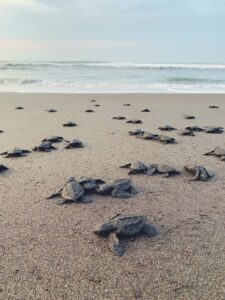
The Impact of Climate Change on Bird Populations: HowEnvironmental Factors Are Affecting Their Survival
Contents
- 1 Introduction
- 2 Climate change affects birds
- 3 Birds are adaptable creatures
- 4 Bird species are moving to different habitats
- 5 Bird populations are changing throughout the world as a result of climate change
- 6 Evolution is slower than climate change, so birds struggle to adapt quickly enough.
- 7 Overpopulation in cities and suburbs is causing birds to go extinct.
- 8 In some cases, birds themselves aren’t suffering the consequences of climate change; rather, their habitat is.
- 9 Birds respond to climate change differently and at different rates, but it’s a serious threat that needs addressing now.
- 10 Conclusion
Introduction
Birds are some of the most diverse animals on Earth, and they’re an important part of our ecosystem. They provide food for other creatures, give us a reason to get outside in nature, and more. But they’re also threatened by climate change—and this threat is growing increasingly serious. In fact, according to research published in Science , climate change has caused an estimated 40% decline in bird populations over the past 60 years alone!
Climate change affects birds
Climate change is expected to have a significant impact on bird populations. Birds’ food sources can be affected by climate change, which may cause them to migrate or adapt their diets. In addition, birds can be affected indirectly by changes in their habitat; for example, if their nesting sites become flooded or dry out due to drought conditions, they will need to find new places to live and raise their young. Climate change also affects migration patterns–some species may shift their routes while others might simply move southward or northward depending on how much the temperature has risen in their region over time.
Finally, climate change can affect bird populations directly through increased temperatures (which leads them into trouble) as well as through other factors like disease outbreaks among animals that prey upon them (such as mosquitoes).
Birds are adaptable creatures
They have the ability to change their behavior and habits to best suit the changing environment in which they live, making them some of the most resilient animals on Earth. Birds can fly south or north if their habitat becomes too hot or cold for them; they can change what they eat so that they continue getting the nutrients needed for survival (and reproduction); they may even migrate earlier than usual because of climate change.
As a result, birds are less affected by environmental factors than many other species–but not completely immune from harm caused by climate change.
Bird species are moving to different habitats
The effects of climate change are also being felt by bird species. Some species have moved to higher latitudes and altitudes, while others have migrated to new ecosystems or habitats within their own ecosystem. For example, birds that live in the Arctic are moving northward as temperatures rise; other species are shifting from one type of habitat (e.g., forest) to another (e.g., shrubland).
Bird populations are changing throughout the world as a result of climate change
As the Earth’s climate changes, it is having a significant impact on bird populations. Birds are moving to different habitats and changing their behavior, diet and mating habits in order to adapt to new environmental conditions.
Some species may become extinct as a result of these changes while others may flourish in this new environment.
Evolution is slower than climate change, so birds struggle to adapt quickly enough.
Birds are some of the most vulnerable animals to climate change, but they’re not alone. Evolutionary adaptation is a slow process that can’t keep up with the pace of climate change. It takes many generations for an animal or plant species to evolve enough to survive in a new environment–and even then, there’s no guarantee that it’ll be able to do so successfully.
Evolutionary adaptation also relies on genetic variation and random chance; this means that some individuals won’t be able to adapt and will die out before they have children. Even if an individual does manage to survive long enough for their offspring (or grandoffspring) to reproduce and pass down the favorable traits they’ve acquired through natural selection over time, there’s no telling whether those traits will persist throughout their descendants’ generations until they’ve become part of every member within that population’s gene pool–especially when other factors like habitat loss or competition from other species threaten survival rates even further!
Overpopulation in cities and suburbs is causing birds to go extinct.
Birds that live in rural areas are also affected by this problem, but it’s more severe in urban areas because there are more humans there to disturb them.
Overpopulation occurs when the number of animals exceeds what the environment can support. When this happens, some species will die off while others will find new homes where they can survive. If they don’t find a new home or if they’re unable to adapt their behaviors enough so that they can live with whatever changes have been made by humans (like building houses), then those species become endangered or even extinct altogether–and that’s exactly what we’ve seen happening with many bird populations around the world today!
In some cases, birds themselves aren’t suffering the consequences of climate change; rather, their habitat is.
Habitat loss is one of the biggest threats to bird populations around the world–and it’s happening at an alarming rate. This phenomenon can take on many forms: habitat degradation (the deterioration of an ecosystem), habitat fragmentation (splitting an ecosystem into smaller parts), habitat destruction or displacement due to human activity like logging or agriculture.
Birds respond to climate change differently and at different rates, but it’s a serious threat that needs addressing now.
As you can see, birds have a wide range of responses to climate change. Some species are more vulnerable than others, but even those that are able to adapt may not be able to handle the rapid changes we’re seeing today.
Conclusion
While there are still many unanswered questions about how climate change will affect birds, we know enough to say that it’s a serious threat that needs addressing now. Birds respond to climate change differently and at different rates, but the results are clear: The world’s bird populations are changing as a result of this phenomenon.



Average Rating